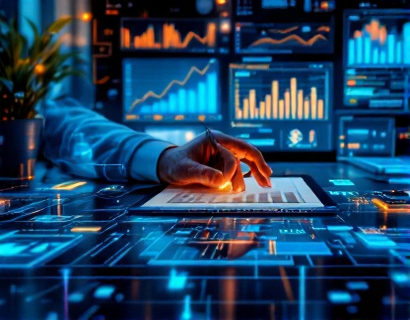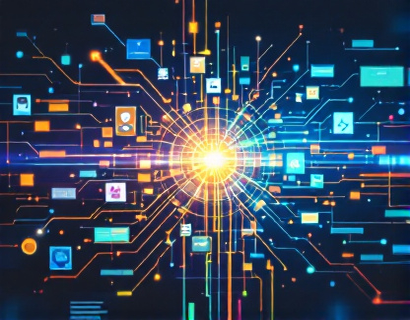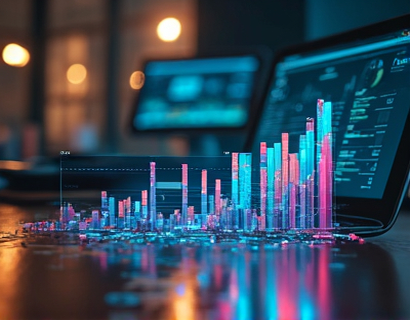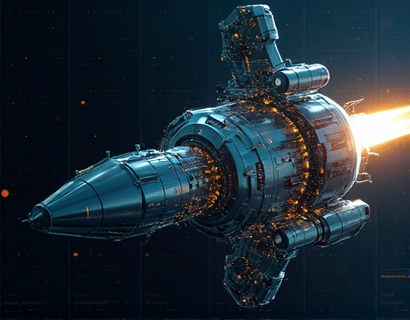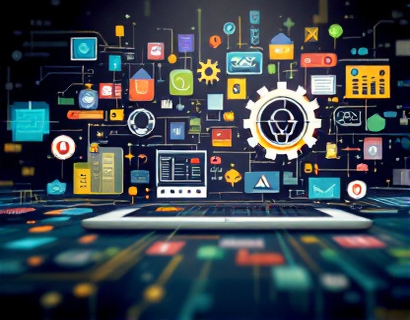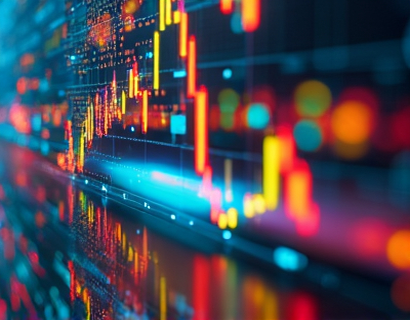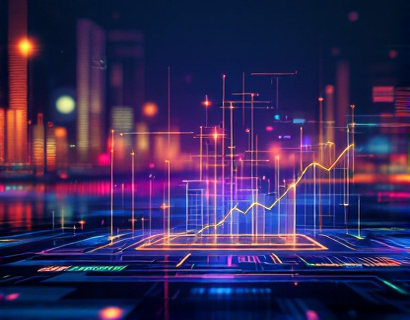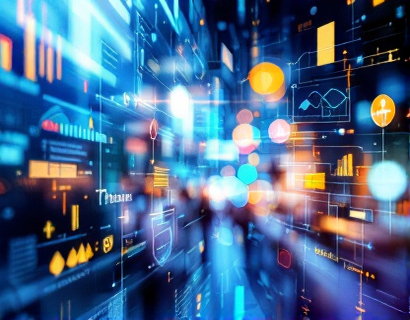AI and Crypto: Revolutionizing Finance and Technology with Innovative Solutions
The intersection of artificial intelligence (AI) and cryptocurrency is ushering in a new era of financial and technological innovation. This fusion is not just a trend but a transformative force that is redefining how we perceive and interact with digital assets and financial systems. The integration of AI into the crypto space is creating sophisticated tools and platforms that enhance security, efficiency, and user experience, setting new industry standards and opening up unprecedented opportunities for growth and adoption.
The crypto market, known for its volatility and complexity, has always sought ways to improve transparency, security, and accessibility. AI offers a suite of technologies that can address these challenges head-on. Machine learning algorithms, natural language processing, and predictive analytics are just a few of the AI tools being leveraged to create more robust and user-friendly crypto solutions. This article delves into the various ways AI is revolutionizing the crypto landscape, from enhancing security measures to optimizing trading strategies and beyond.
Enhancing Security with AI
Security is a paramount concern in the crypto world, where the risk of fraud, hacking, and theft is ever-present. AI plays a crucial role in fortifying the security of crypto assets and transactions. One of the primary applications is in fraud detection and prevention. AI algorithms can analyze vast amounts of data in real-time to identify patterns and anomalies that may indicate fraudulent activity. By continuously learning from new data, these systems become increasingly adept at spotting and mitigating threats before they can cause significant damage.
Another critical area where AI enhances security is in the management of private keys and wallet security. Traditional methods of storing private keys, such as hardware wallets, can be vulnerable to physical theft or technical failures. AI-driven solutions offer more secure alternatives by using biometric authentication, behavioral analysis, and multi-factor authentication to ensure that only authorized users can access sensitive information. These advanced security measures not only protect individual users but also bolster the overall trust in the crypto ecosystem.
Optimizing Trading Strategies with AI
Trading in the crypto market is both an art and a science, requiring a deep understanding of market dynamics, technical indicators, and economic factors. AI brings a scientific approach to trading by leveraging advanced algorithms to analyze vast datasets and make informed decisions. One of the most significant benefits of AI in trading is its ability to process and analyze large volumes of data much faster and more accurately than human traders. This capability allows for the identification of subtle market trends and patterns that might go unnoticed by human eyes.
Automated trading bots powered by AI can execute trades based on predefined strategies, 24/7, without the emotional biases that often affect human traders. These bots can adapt to changing market conditions in real-time, optimizing trade execution and maximizing returns. Additionally, AI can perform backtesting on historical data to refine trading strategies and predict future market movements with greater accuracy. This not only enhances the efficiency of trading operations but also reduces the risk of human error.
Improving User Experience through AI
The crypto space is complex and often intimidating for newcomers. AI can significantly improve the user experience by providing intuitive and personalized interactions. Chatbots and virtual assistants powered by natural language processing (NLP) can offer real-time support and guidance to users, answering queries and providing explanations in a conversational manner. This not only enhances user satisfaction but also lowers the barrier to entry for those new to crypto.
Personalization is another area where AI shines. By analyzing user behavior and preferences, AI can tailor recommendations and services to individual needs. For instance, a crypto platform can use AI to suggest investment strategies based on a user's risk tolerance, investment history, and market conditions. This level of personalization not only enhances the user experience but also fosters greater engagement and loyalty.
Smart Contracts and Decentralized Applications
Smart contracts are self-executing contracts with the terms of the agreement directly written into code. When combined with AI, smart contracts can become even more powerful and versatile. AI can enhance the functionality of smart contracts by enabling them to make decisions based on complex data inputs and real-time market conditions. This opens up new possibilities for decentralized applications (dApps) that can automate a wide range of processes, from supply chain management to decentralized finance (DeFi) platforms.
AI can also improve the reliability and efficiency of smart contracts by detecting and mitigating potential vulnerabilities. Machine learning algorithms can analyze the code for common flaws and suggest optimizations, reducing the risk of bugs and security breaches. This ensures that dApps operate smoothly and reliably, further enhancing user trust in decentralized systems.
Market Analysis and Predictive Insights
One of the most exciting applications of AI in the crypto space is its ability to provide deep market insights and predictive analytics. Traditional market analysis often relies on historical data and basic statistical models, which may not capture the full complexity of crypto markets. AI, however, can process and analyze vast amounts of data from various sources, including social media, news articles, and transaction records, to generate comprehensive and actionable insights.
Predictive models powered by AI can forecast market trends and price movements with higher accuracy than traditional methods. These models take into account a wide range of factors, including macroeconomic indicators, sentiment analysis, and technical indicators. By providing reliable predictive insights, AI helps traders and investors make more informed decisions, potentially leading to better investment outcomes.
Challenges and Considerations
While the integration of AI into the crypto space offers numerous benefits, it also comes with its own set of challenges and considerations. One of the primary concerns is the regulatory landscape. As AI and crypto continue to evolve, regulators are grappling with how to oversee these innovative technologies. Ensuring compliance with existing regulations while fostering innovation is a delicate balance that requires careful consideration and collaboration between stakeholders.
Another challenge is the ethical use of AI. The deployment of AI in crypto must be guided by ethical principles to prevent misuse and ensure fairness. Issues such as data privacy, algorithmic bias, and transparency are critical and must be addressed to build a trustworthy and equitable ecosystem. Developers and organizations must prioritize ethical AI practices and adhere to best standards to maintain the integrity of the crypto market.
Future Prospects
The future of AI and crypto is bright, with numerous opportunities for further innovation and growth. As AI technologies continue to advance, we can expect even more sophisticated tools and solutions to emerge. For instance, the integration of AI with blockchain beyond smart contracts could lead to the development of more complex and efficient decentralized systems. Additionally, the rise of quantum computing presents both challenges and opportunities, as it could potentially enhance AI capabilities while also requiring new security measures.
The convergence of AI and crypto is not just a technological trend but a fundamental shift in how we approach finance and technology. By leveraging the strengths of both domains, we can create more secure, efficient, and user-friendly systems that empower individuals and businesses alike. As the crypto and AI communities continue to collaborate and innovate, the possibilities for transformative change are endless.








